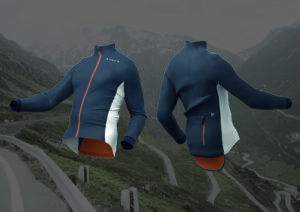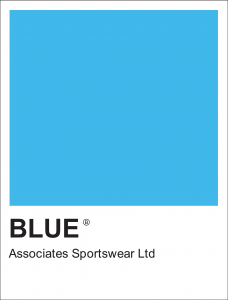In the ever-evolving world of sportswear manufacturing, companies face a crucial decision when it comes to sourcing their products. China and European countries have established themselves as key players in the global supply chain, each offering their own unique advantages and considerations.
Choosing between sourcing sportswear from China or European factories is a multi-layered decision that requires careful thought of numerous factors.
Let’s take a look into the main factors that need to be considered when sourcing a manufacturer in China or Europe:
Cost Dynamics
China has long been the primary destination for cost-effective manufacturing. The country’s great production capabilities, well-developed supply chain, and a vast pool of skilled labour contributes to its competitive pricing.
However, it’s crucial to note that the cost advantage is ever changing. Over the past decade, labour costs in China have experienced a gradual but noticeable increase. As a nation, manufacturing wages have risen, which is narrowing the cost gap with some European counterparts. Nonetheless, China remains an attractive option for producing sportswear apparel at a relatively lower cost.
While European countries are often associated with higher labour costs, the proximity to markets and reduced shipping expenses can offset some of these financial concerns.
European nations often prioritise cutting-edge technology, and sustainable practices, which then contributes to the perceived higher upfront costs.
Quality and Innovation
China’s reputation for mass production and affordability often overshadows it’s potential for delivering high quality sportswear.
In recent years, Chinese manufacturers have invested significantly in upgrading their facilities and adopting advanced technologies, resulting in improved product quality.
Additionally, China has become a hub for technological innovation. Many factories in the country are equipped with state-of-the-art machinery and processes, enabling them to stay at the forefront of industry trends.
While historically associated with quantity over quality, Chinese manufacturers are increasingly focusing on delivering products that meet or exceed international standards.
European factories have long been synonymous with craftsmanship and a dedication to producing high-quality goods. The region’s emphasis on artisanal approaches to manufacturing contributes to a perception of superior quality among European-made sportswear. Moreover, European countries are often leaders in the adoption of sustainable and ethical practices, aligning with the preferences of an increasingly conscious consumer base.
The decision between China and Europe in terms of quality and innovation should consider the specific requirements of the target market. Brands emphasizing craftsmanship and sustainable practices may find European manufacturing more aligned with their values.
Lead times and Flexibility
One of China’s standout advantages is its ability to handle large-scale production with quick turnaround times. Chinese factories are often adept at mass production, enabling brands to meet high demand and respond swiftly to market trends. However, this efficiency can sometimes come at the expense of flexibility.
Smaller orders or requests for customisations may face challenges in Chinese manufacturing settings, where the focus is often on optimizing production for larger quantities. Brands must carefully assess their production needs and timelines to ensure compatibility with the strengths and limitations of Chinese factories.
European factories, while potentially offering shorter shipping times for brands within the region, may have longer lead times due to smaller-scale operations or a more tailored approach to production.
European manufacturers are often more willing to accommodate smaller orders, catering to brands with a focus on exclusivity or a need for rapid adjustments to design changes. This flexibility can be a decisive factor for companies with a dynamic product development cycle.
Environmental and Ethical considerations
Efforts towards sustainable practices are increasing, but concerns about environmental and ethical standards persist. Brands must carefully vet suppliers to ensure adherence to desired standards.
China, with its historical dominance in mass production, remains a powerhouse for brands seeking cost-effective manufacturing on a large scale. However, it must be taken into account the environmental impact of shipping via air and sea.
European factories may align more closely with brands seeking to minimize their ecological footprint. While often associated with higher upfront costs, the advantages of proximity, reduced shipping expenses, and greater flexibility in production can make European sourcing an appealing option for certain brands.
Choosing between sourcing sportswear from China or European factories is a multifaceted decision that requires careful consideration of numerous factors. The balance between cost, quality, innovation, lead times, and flexibility must align with a brand’s values, target market, and overall business strategy.
Ultimately, the key to success lies in forging strong partnerships with reputable suppliers, regardless of the geographical location. Whether opting for the efficiency of Chinese manufacturing or the craftsmanship of European factories, businesses must prioritise collaboration with manufacturers who share a commitment to delivering exceptional sportswear products that resonate with the values of their target audience.
If you are looking for a factory and can’t decide if China or Europe is best for your brand, then please get in touch.




